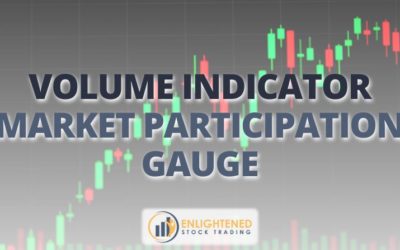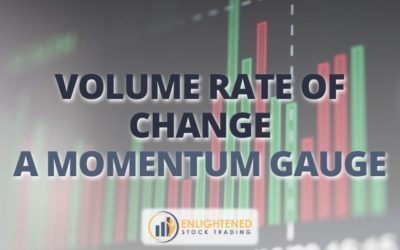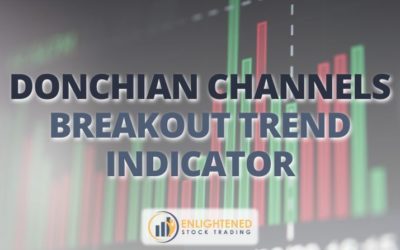If you've ever felt overwhelmed, inconsistent, or uncertain in your stock trading, you're not alone. Most retail traders struggle because they rely on gut feel, emotion, or scattered advice — not a tested, repeatable process. This presentation, Systematic Trading: End the Struggle, reveals the real reason traders fail… and more importantly, what to do instead. You'll learn: Why discretionary...
Adrian Reid

Fibonacci Fan: How to Use Fibonacci-Based Trendlines for Trading Success
The Fibonacci Fan is a powerful trading indicator in technical analysis that helps traders identify potential support levels, resistance levels, and trend reversals. It is based on Fibonacci retracements, which originate from the Fibonacci sequence, discovered by the Italian mathematician Leonardo Fibonacci. These Fibonacci ratios are widely used in financial markets to predict future price...
Fibonacci Cycles Explained: Unlock the Secrets of Market Timing
Fibonacci Cycles are a powerful technical analysis trading indicator that helps traders predict cyclical price movements in the market. Derived from the Fibonacci sequence, first introduced to the Western world by Leonardo Fibonacci (also known as Leonardo Pisano or Leonardo of Pisa), an Italian mathematician, in his 1202 book, Liber Abaci, this indicator identifies patterns and cycles in price...
Fibonacci Arcs Explained: Unlock Hidden Price Reversal Signals
Fibonacci arcs are a trading indicator used for identifying potential support and resistance levels based on the Fibonacci sequence. These arcs are drawn using two extreme points, typically a swing high and swing low, and then projected outward using key Fibonacci ratios—38.2%, 50%, and 61.8%. The arcs mark potential support or resistance zones, helping traders anticipate price movement and...
How to Use Fibonacci Retracements for Smarter Trade Entries
Fibonacci retracements are a widely used trading indicator that helps traders identify potential support and resistance levels during price pullbacks. It allows traders to forecast where prices might reverse within a trend. Imagine driving down a straight highway, and every time you approach a curve, there's a sign indicating how much you've deviated from the straight path. These signs show you...
Mastering Pivot Points: A Simple Guide for Smarter Trading
Pivot Points are one of a trader's most reliable trading indicator tools. At their core, they are predetermined price levels on a price chart that signal potential areas of support and resistance levels. But instead of sounding like another technical indicator, think of Pivot Points as GPS markers for retail and floor traders. Imagine driving through a new city without a map—every intersection...
Mastering the Volume Indicator: Boost Your Stock Trading Edge
The Volume trading indicator measures the total number of shares traded for a specific stock over a time period. It tells you how much activity is behind a price move, offering valuable insight into market trends and market strength. Think of trading volume like the crowd at a sporting event. If a team scores and the crowd erupts, it’s a big moment. But if the same team scores in an empty...
Keltner Channels: A Powerful Tool for Spotting Breakouts & Trends
Keltner Channels are a volatility-based trading indicator that helps traders identify market trends and potential reversal points. The indicator consists of three separate lines: a middle line (Channel Middle Line) using an exponential moving average (EMA), and two outer bands above and below the moving average. The outer bands adjust based on the Average True Range (ATR), which measures market...
How to Use the Detrended Price Oscillator for Better Entries
The Detrended Price Oscillator (DPO) is a technical analysis trading indicator used to remove trends from price data, helping traders focus on shorter-term cycles. Essentially, DPO attempts to remove trends by stripping away the "noise" caused by long-term price movements, allowing traders to identify cycles that might otherwise be hidden. Think of the DPO as cleaning a window: It removes...
Volume Rate of Change: A Simple Guide for Traders
Trading volume is often the silent companion to price trend movements, understanding it can unlock deeper insights into volume analysis, and one tool that helps traders do just that is the volume rate of change trading indicator. Think of trading volume as the engine behind the average price. When the engine revs up (high volume), the price trend moves faster and becomes stronger. The volume...
How to Trade with Donchian Channels Like a Pro
Donchian Channels, developed by Richard Donchian, are a trading indicator designed to help traders determine market volatility and identify potential entry and exit points. For systematic traders, this clarity is essential for developing consistent, rules-based strategies that reduce the emotional roller coaster often experienced in discretionary trading.Donchian Channels are made up of three...
How to Use the McClellan Oscillator for Profitable Stock Trading?
The McClellan Oscillator is a market breadth tool that is used as a key trading indicator to analyze the overall stock market rather than individual stocks. Developed by Sherman and Marian McClellan in the 1960s, it measures market trends by evaluating the number of advancing and declining stocks. This helps traders gauge whether the market is bullish or bearish. Think of the McClellan...












